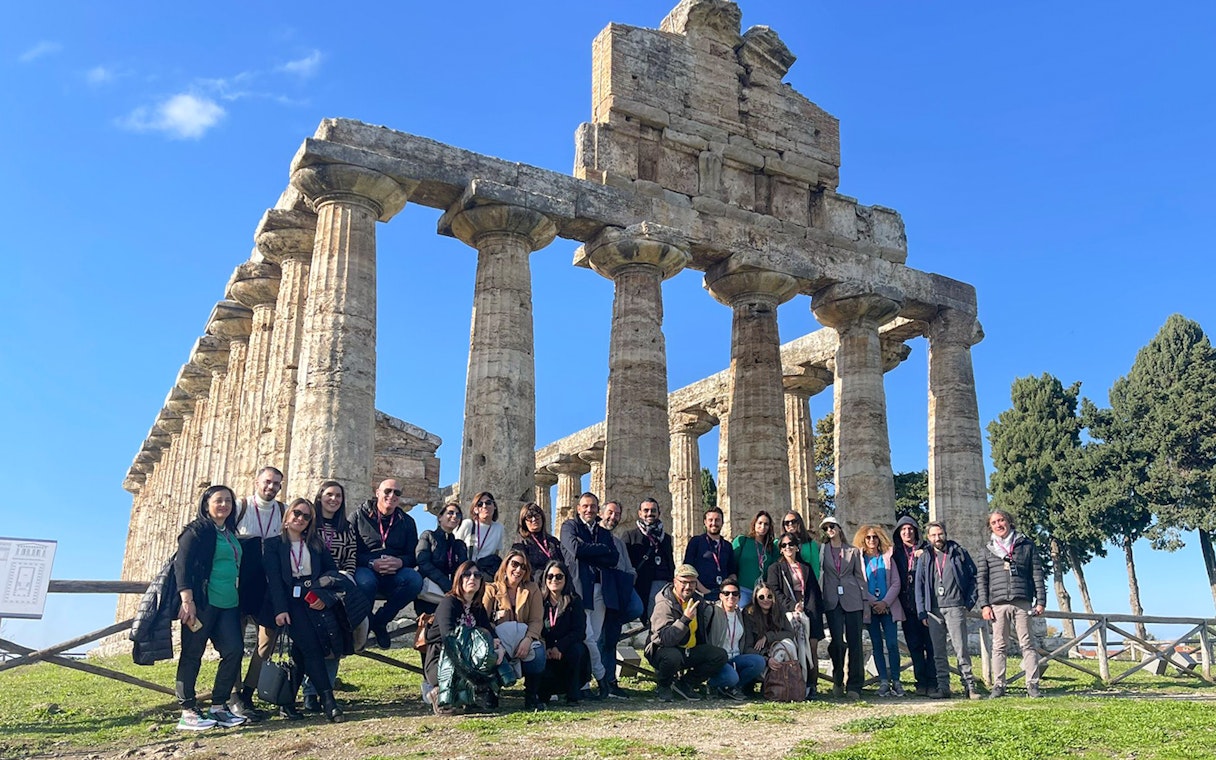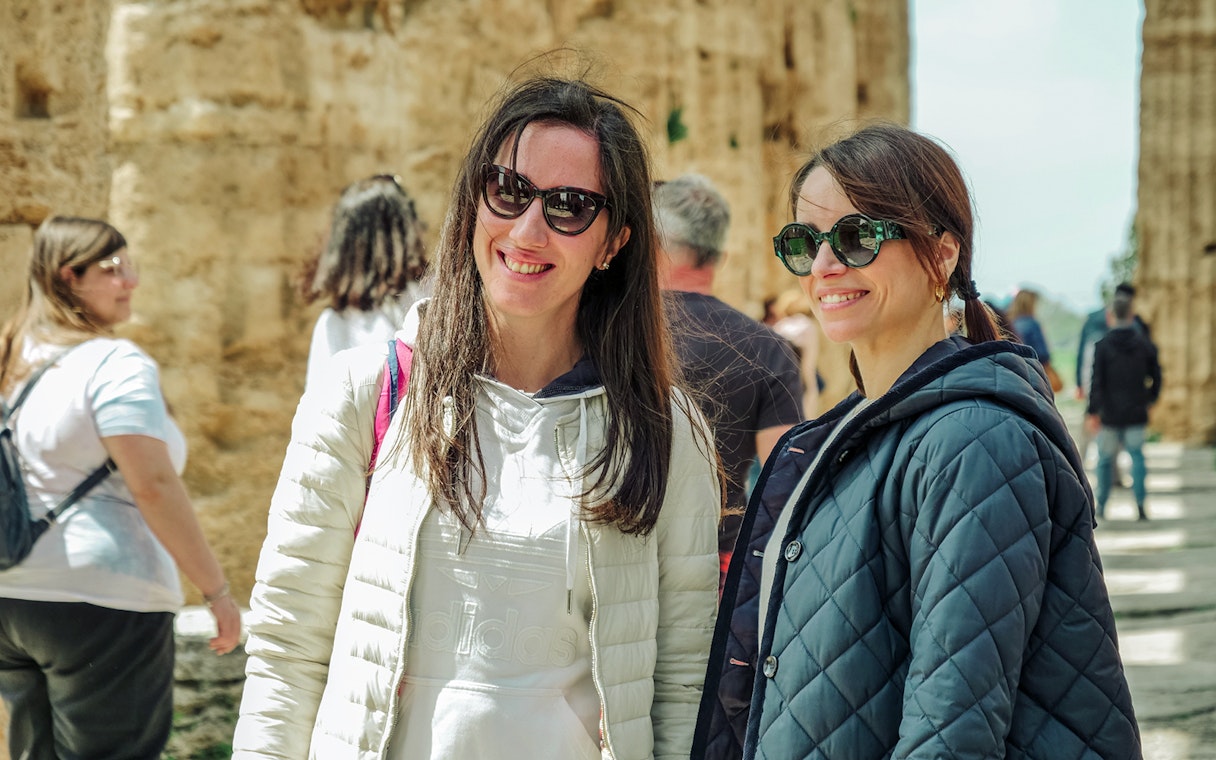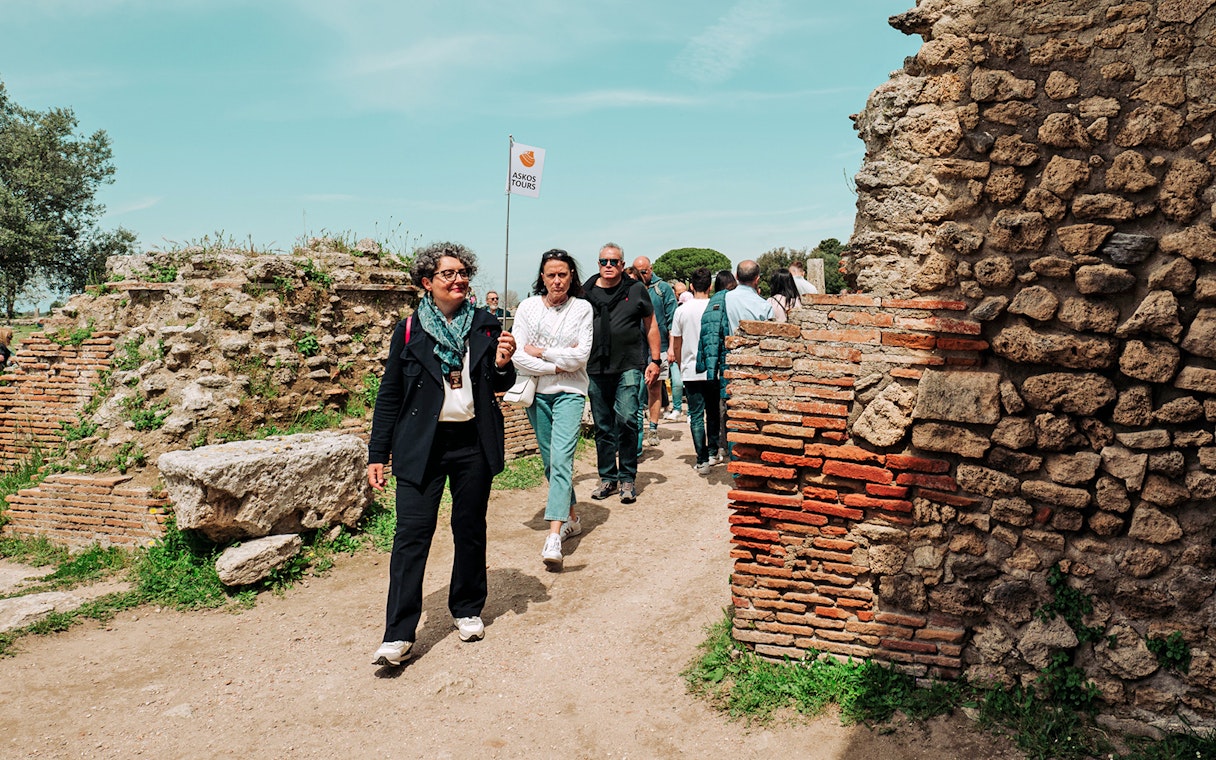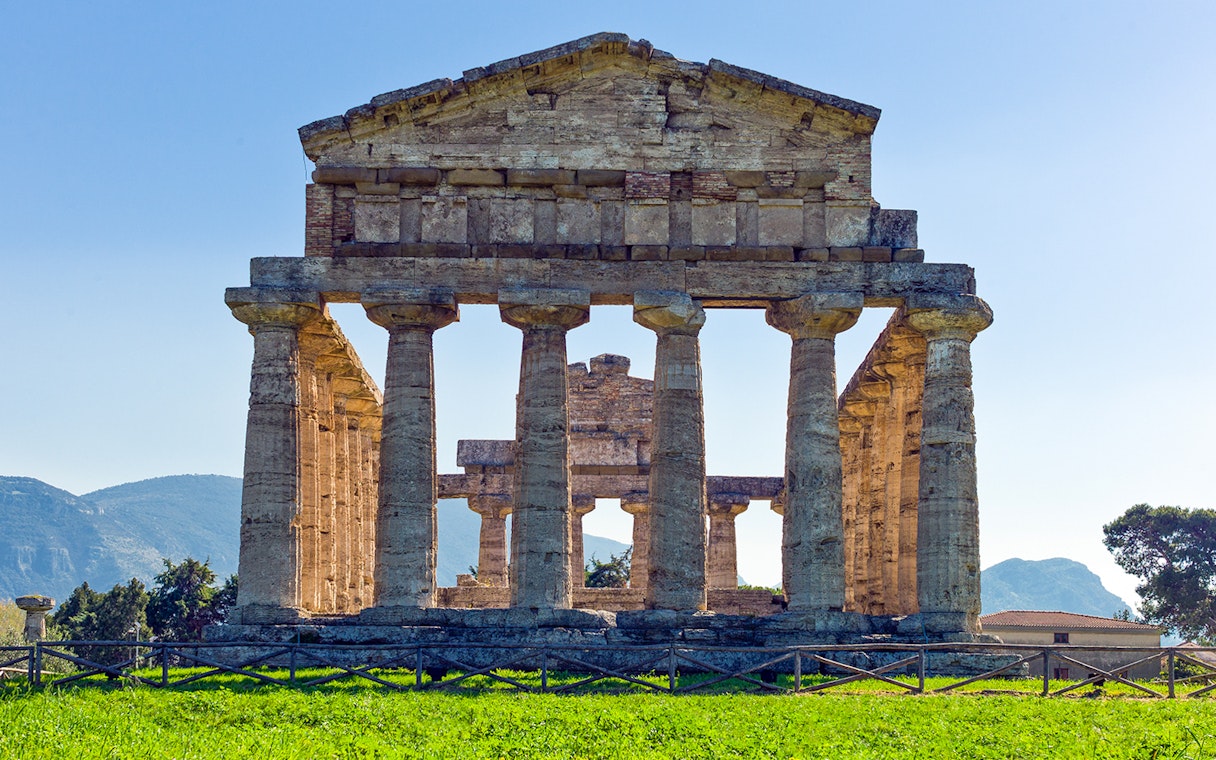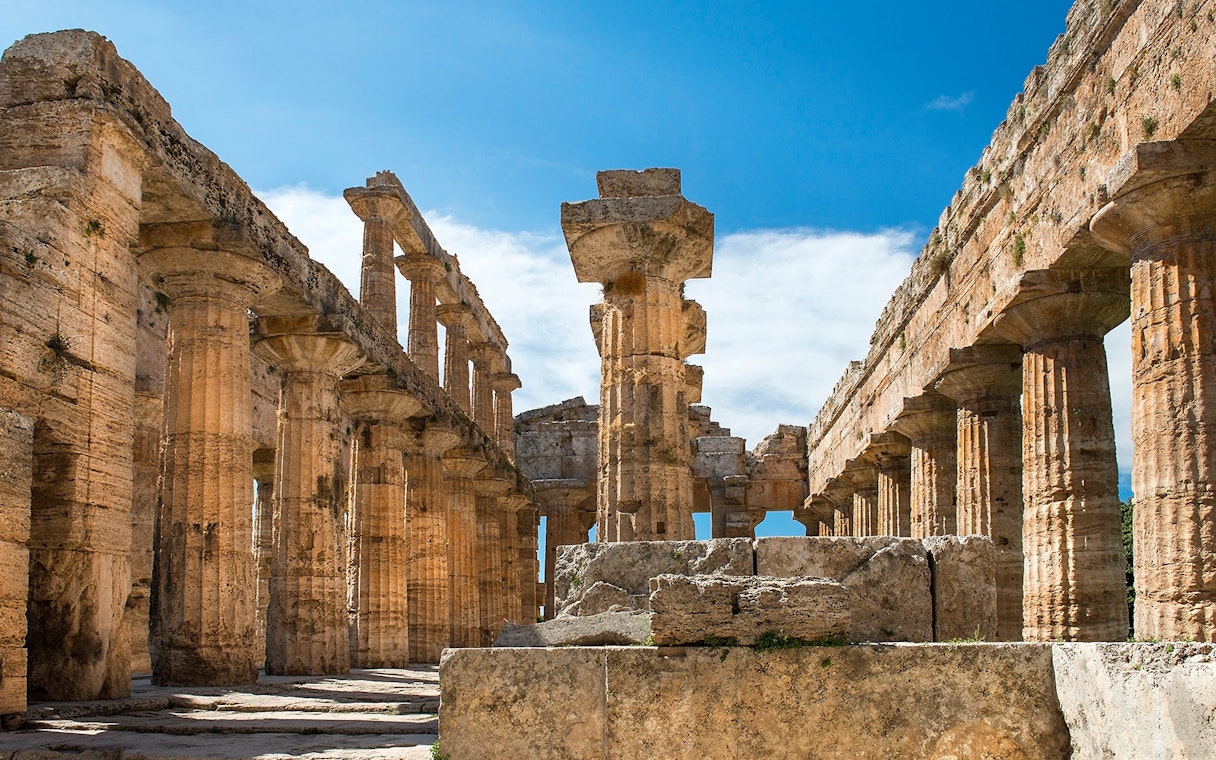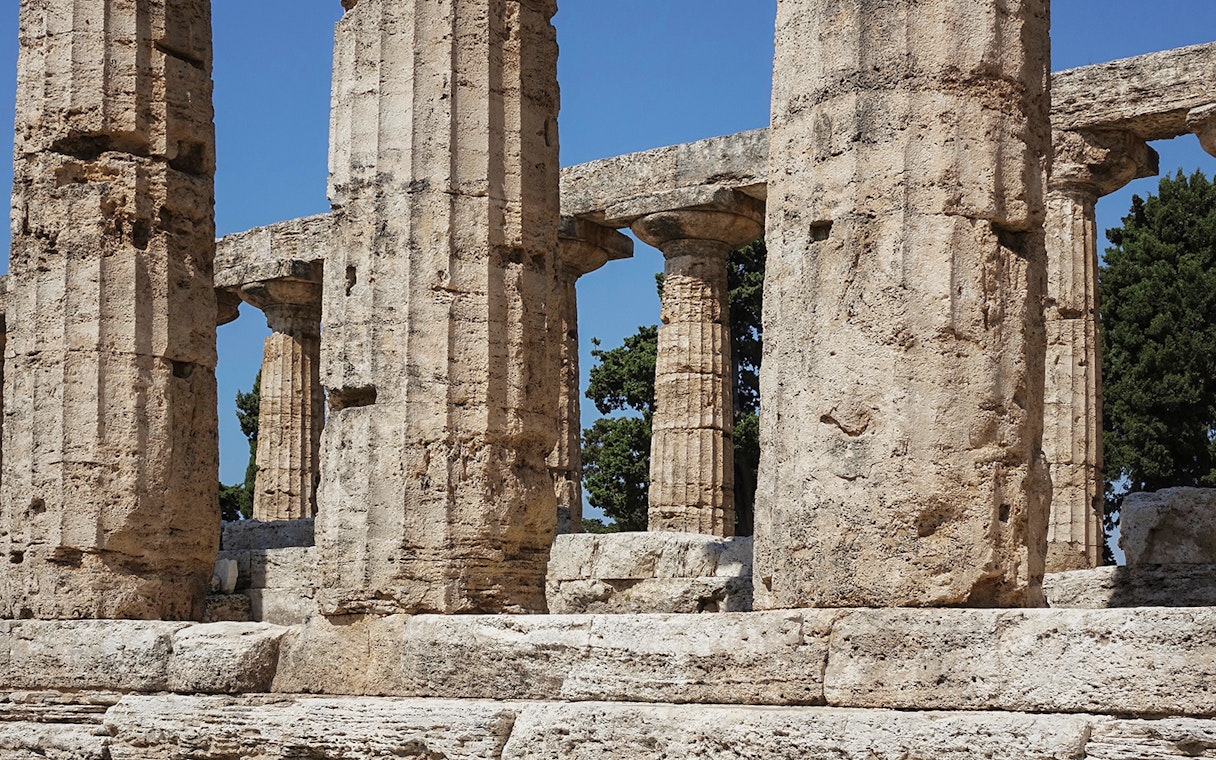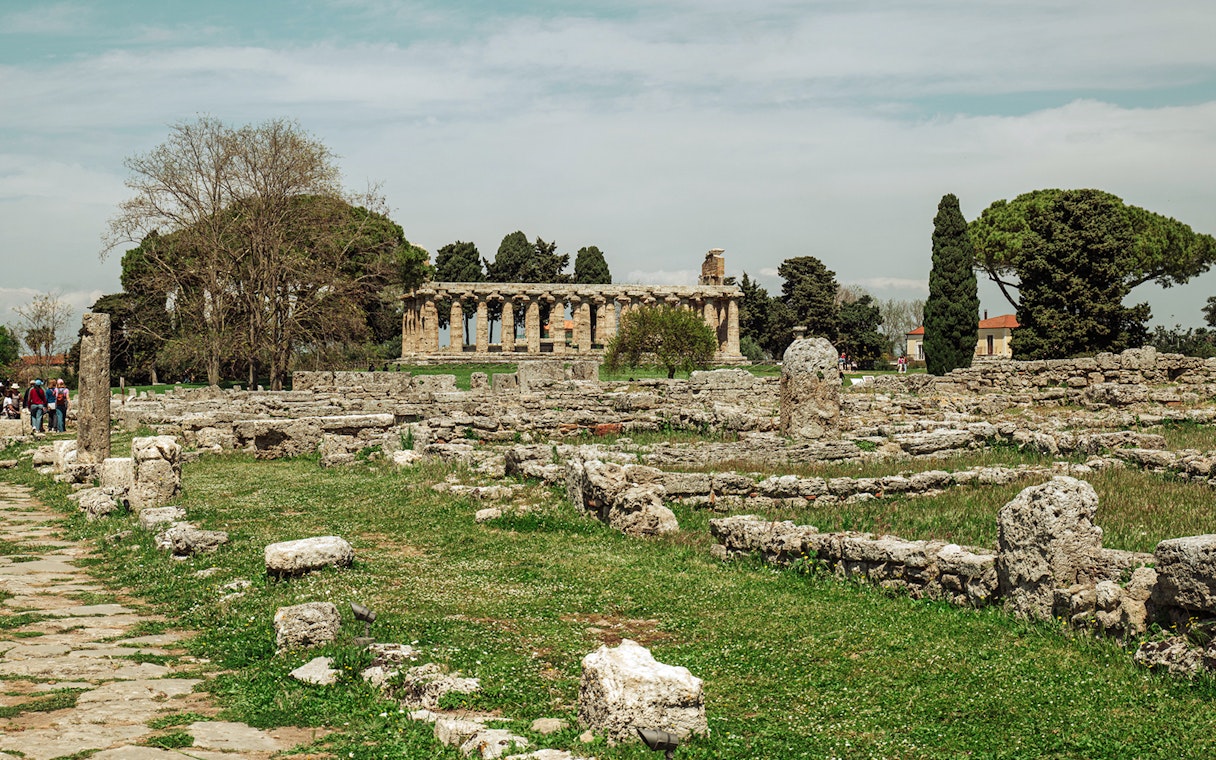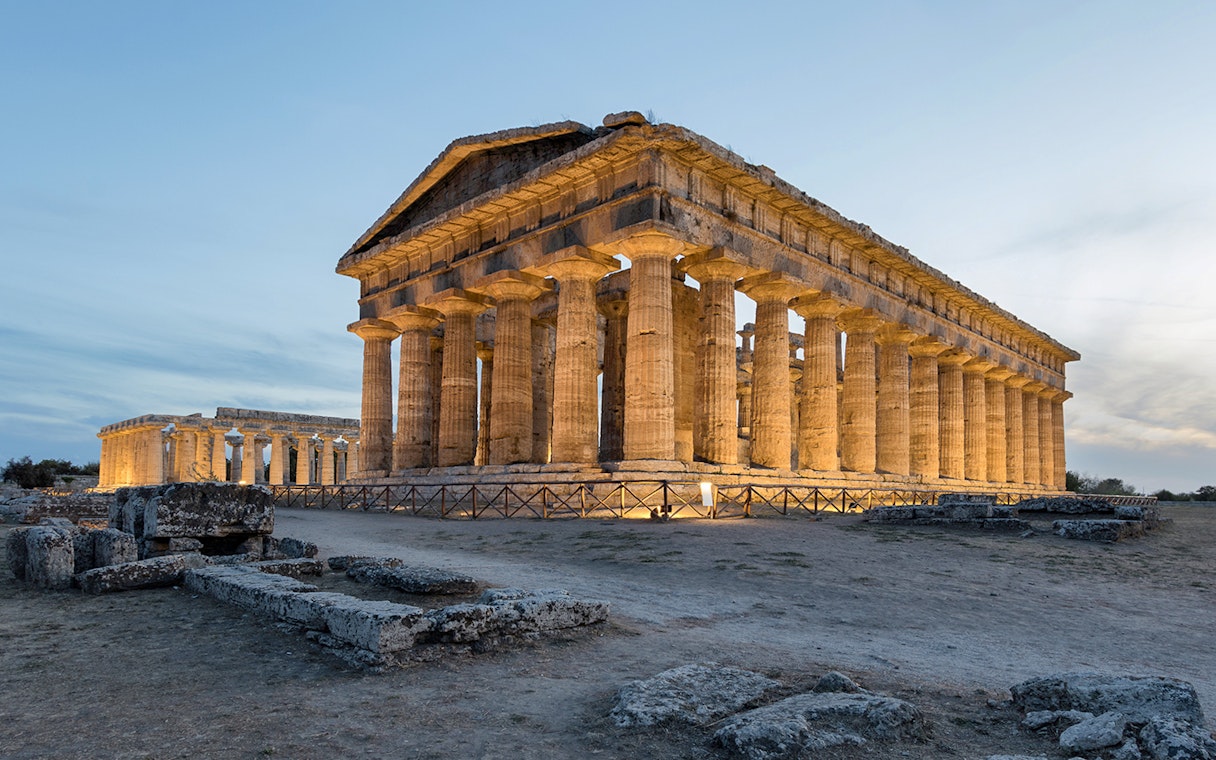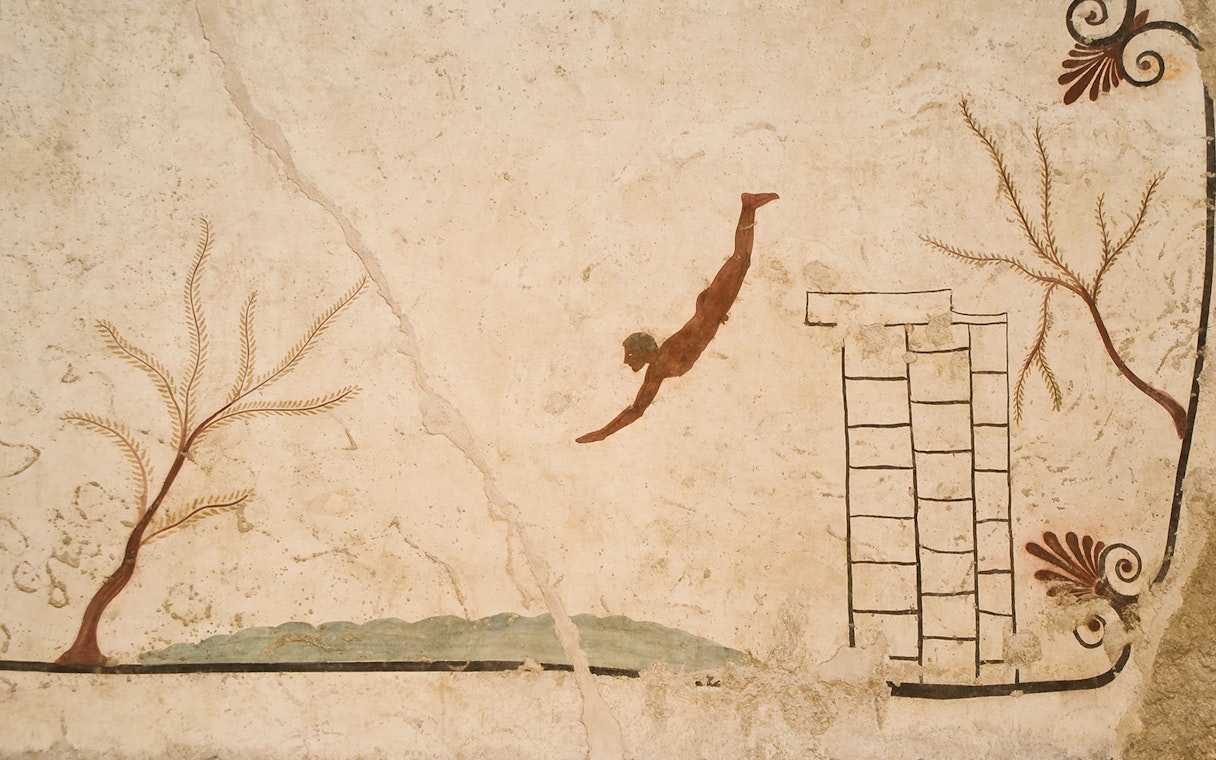Paestum
From the well-preserved Temple of Hera to the intricate details of the Tomb of the Diver, the Archaeological Park of Paestum highlights the rich cultural heritage and artistic achievements of an ancient civilization.
45M+ travellers love us
Delivering best in class experience
Visitor's guide
Must-see highlights & key info
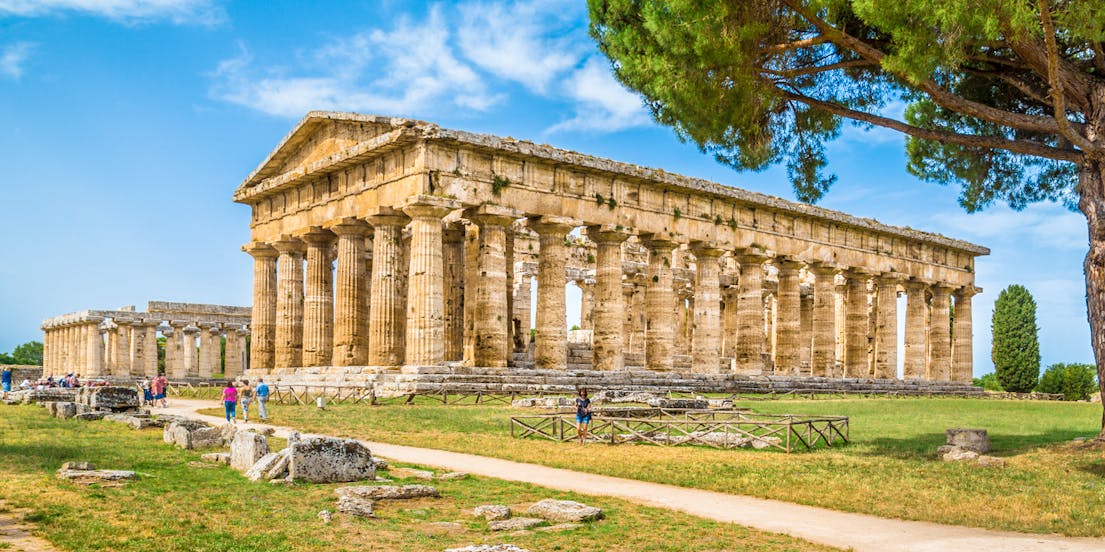
-
In a small group, learn about the life of the Early Greeks from your archaeologist guide with dedicated headsets included.
-
Skip the lines and visit the ruins that house the Doric temples of Neptune, Hera, Athena, the amphitheater, the forum, and the markets.
-
Stop by the National Archaeological Museum and witness picturesque artworks of the Magna Greece.
-
Choose between English and Italian-guided tours. Opt for a personalized private tour in Paestum for a tailored exploration experience.
-
Fun Fact: The temples are so well-preserved that they were used as models for reconstructing other ancient Greek temples including the Parthenon in Athens.
More details
-
In a small group, learn about the life of the Early Greeks from your archaeologist guide with dedicated headsets included.
-
Skip the lines and visit the ruins that house the Doric temples of Neptune, Hera, Athena, the amphitheater, the forum, and the markets.
-
Stop by the National Archaeological Museum and witness picturesque artworks of the Magna Greece.
-
Choose between English and Italian-guided tours. Opt for a personalized private tour in Paestum for a tailored exploration experience.
-
Fun Fact: The temples are so well-preserved that they were used as models for reconstructing other ancient Greek temples including the Parthenon in Athens.
Pro tips to help you make a pick
About Paestum Archaeological Site
Paestum Archaeological Park, located in the Campania region of Italy, showcases stunning ancient Greek and Roman ruins, including the remarkably preserved Temple of Hera and Temple of Athena. With its UNESCO World Heritage status and proximity to the Amalfi Coast, it's a must-visit destination for history lovers and travelers exploring the rich cultural heritage of the Mediterranean.

The Paestum ruins date back to the 6th and 5th centuries BCE.

They are approximately 2,500 years old.

The archaeological site of Paestum has three of the world’s best-preserved ancient Greek temples, and is a UNESCO World Heritage site.
Why visit Paestum Archaeological Site?
Plan your visit
Porta Aurea
This entrance is to the North.
Porta Sirena
This entrance is to the East.
Porta Giustizia
Porta Giustizia is to the South.
Porta Marina
Porta Marina is to the West.
- The Paestum Museum is open from 8:30am to 1:40pm on the first and third Monday of every month, and the last entry time is at 1pm.
- April to June: 8:30am to 7:30pm
- November to March: 8:30am to 5pm.
- The last ticket is issued at 6:50pm during the summer months (April to June) and at 4pm during fall (October to March)
Cloakrooms are available at the ticket office of Porta Principale where visitors can deposit backpacks, bags, and luggage.
These are available on purchasing tickets to visit Paestum. These provide detailed information about the various attractions within the Paestum archaeological site.
Nearby cities to explore

